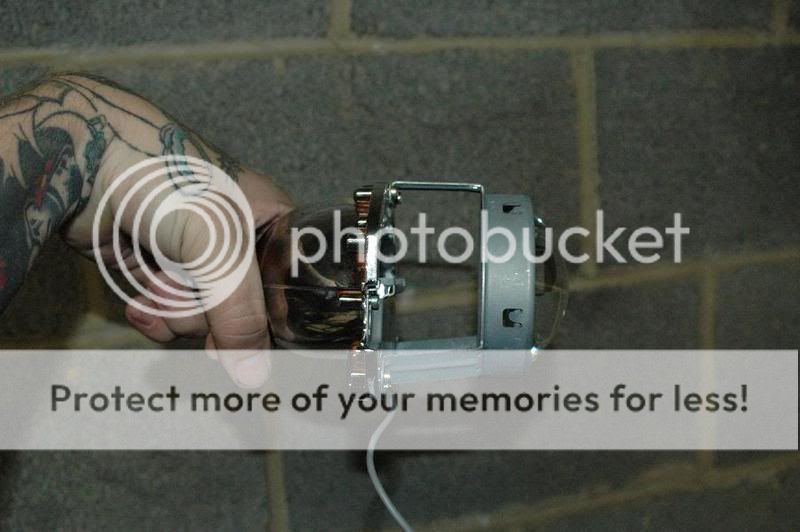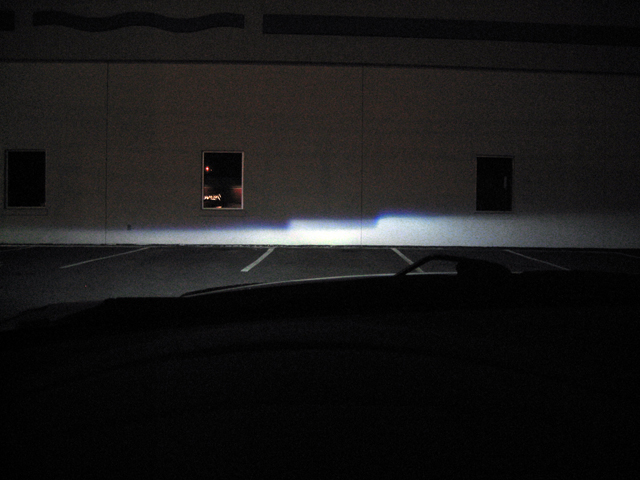96 trans am head lights
#2
#3
Copy & Paste Moderator
Here is a primer...
HID = High Intensity Discharge
Its a bulb and ballast assembly. Instead of a filament glowing in a glass tube (incandescent & halogen), HID is a arc of electricity at a high voltage in a glass tube.
Projector Housing
Its a light housing with a reflector "bowl" in the rear, cut-off shield in the middle, and curved glass focus in front. It produces a wide even light pattern with a sharp flat or stepped line with light below and little to no light above. Some projectors are halogen, some are HID.
Reflector Housing
Standard incandescent & Halogen housing with a reflector in the rear and either Clear or Fresnel or Parabolic glass in front. The cut-off and general pattern is not as well defined as a projector. There is no cut-off shield. The beam pattern is determined by the glass pattern and reflector shape. Almost all reflector housings are halogen or incandescent. Only a couple HID reflector setups were available from the OEMs.
Check out the Lighting FAQ for some more info on Headlight upgrades and projectors. HID Planet's Forums is also a great place for information.
You shouldn't install HID in the High Beam location because they can't be flashed quickly. You'd loose the ability to signal other drivers with the high beams. Vehicles that come from the factory with HID high beam have Bi-Xenon projectors. Its one projector housing for low beam and high beam with a movable cut-off shield. For the high beam, the cut-off shield rises to let more light upwards like a standard high beam pattern.
Here are some examples of bare projectors:


(Not my hand.)
Here is an example of a projector beam pattern:

(My 2001 Formula with Hella 90mm H9 projector, modified cut-off, and 4300K HID kit.)
Here is some good reading:
http://www.danielsternlighting.com/t...nversions.html
http://www.danielsternlighting.com/t...e/bad/bad.html
http://www.danielsternlighting.com/t...good/good.html
Some good discussion here:
https://ls1tech.com/forums/appearanc...un-around.html
Regarding HID Kits:
Basically Halogen and HID produce light differently (glowing filament vs. arc of light) and HID kits don't always place the arc in the same place as the Halogen filament. And some halogen filaments are horizontal to the glass tube. All HID arcs are vertical in the glass tube. Which means that the focal point will be off and you'll get a bad light pattern. Also, HID puts out a lot more light than Halogen. Therefore a Halogen Reflector Housing intended to spread a certain amount of light of a certain shape over a certain area now has a lot more light going outside this area not necessarily where it is needed and often where it shouldn't be (high, blotchy, and often into the eyes of others).
This problem becomes compounded with dual filament hi/lo applications. I've seen four kinds of so-called "bi-xenon" HID kits designed for dual filament applications:
1.) One fixed/non-movable HID capsule
You lose high beam but its position and resulting pattern is like the high beams are stuck on and you are blinding everyone.
2.) One HID capsule for low beam and One Halogen bulb for high beam attached to same base
Neither is positioned correctly and the high beam bulb is not replicable. Sucks for you if it blows.
3.) Two HID capsules on one base. Neither is positioned correctly and you have way too much light coming out for high beam and you can't flash-to-pass because HID starts up slowly and you can damage the bulbs and ballasts from frequent flashing.
4.) One Movable HID capsule often with a built-in shield/cap. This is the "best" of these options because it trys to put the arc in close to the correct position for high/low operation. The capsule will move depending on whether you have the high or low beam activated. The beam pattern is still not good, but not nearly as bad as the above options.
For clarification, a bi-xenon projector has only one fixed/non-movable HID bulb. When high beam is activated, the cut-off shield inside the projector moves to allow more light higher through the lens.
Check out the Lighting FAQ: https://ls1tech.com/forums/showthread.php?t=710357
The K number is the color temp. It is not the brightness (well not directly, I'll explain). 4000K - 5000K is the brightest. Continuing up the color scale, the light gets bluer then purpler and the lumen output (the actual measurement of light) decreases. In other words, a 10000K HID kit is dimmer than a 4300K HID kit. Our eyes are least sensitive to blue light. Blue light also scatters more easily. In the end, we can see better with 4300K HID for many reasons.
For the 1993-1997 Firebird, you'd need a bi-xenon setup otherwise you'd lose high beams.
HID = High Intensity Discharge
Its a bulb and ballast assembly. Instead of a filament glowing in a glass tube (incandescent & halogen), HID is a arc of electricity at a high voltage in a glass tube.
Projector Housing
Its a light housing with a reflector "bowl" in the rear, cut-off shield in the middle, and curved glass focus in front. It produces a wide even light pattern with a sharp flat or stepped line with light below and little to no light above. Some projectors are halogen, some are HID.
Reflector Housing
Standard incandescent & Halogen housing with a reflector in the rear and either Clear or Fresnel or Parabolic glass in front. The cut-off and general pattern is not as well defined as a projector. There is no cut-off shield. The beam pattern is determined by the glass pattern and reflector shape. Almost all reflector housings are halogen or incandescent. Only a couple HID reflector setups were available from the OEMs.
Check out the Lighting FAQ for some more info on Headlight upgrades and projectors. HID Planet's Forums is also a great place for information.
You shouldn't install HID in the High Beam location because they can't be flashed quickly. You'd loose the ability to signal other drivers with the high beams. Vehicles that come from the factory with HID high beam have Bi-Xenon projectors. Its one projector housing for low beam and high beam with a movable cut-off shield. For the high beam, the cut-off shield rises to let more light upwards like a standard high beam pattern.
Here are some examples of bare projectors:


(Not my hand.)
Here is an example of a projector beam pattern:

(My 2001 Formula with Hella 90mm H9 projector, modified cut-off, and 4300K HID kit.)
Here is some good reading:
http://www.danielsternlighting.com/t...nversions.html
http://www.danielsternlighting.com/t...e/bad/bad.html
http://www.danielsternlighting.com/t...good/good.html
Some good discussion here:
https://ls1tech.com/forums/appearanc...un-around.html
Regarding HID Kits:
Basically Halogen and HID produce light differently (glowing filament vs. arc of light) and HID kits don't always place the arc in the same place as the Halogen filament. And some halogen filaments are horizontal to the glass tube. All HID arcs are vertical in the glass tube. Which means that the focal point will be off and you'll get a bad light pattern. Also, HID puts out a lot more light than Halogen. Therefore a Halogen Reflector Housing intended to spread a certain amount of light of a certain shape over a certain area now has a lot more light going outside this area not necessarily where it is needed and often where it shouldn't be (high, blotchy, and often into the eyes of others).
This problem becomes compounded with dual filament hi/lo applications. I've seen four kinds of so-called "bi-xenon" HID kits designed for dual filament applications:
1.) One fixed/non-movable HID capsule
You lose high beam but its position and resulting pattern is like the high beams are stuck on and you are blinding everyone.
2.) One HID capsule for low beam and One Halogen bulb for high beam attached to same base
Neither is positioned correctly and the high beam bulb is not replicable. Sucks for you if it blows.
3.) Two HID capsules on one base. Neither is positioned correctly and you have way too much light coming out for high beam and you can't flash-to-pass because HID starts up slowly and you can damage the bulbs and ballasts from frequent flashing.
4.) One Movable HID capsule often with a built-in shield/cap. This is the "best" of these options because it trys to put the arc in close to the correct position for high/low operation. The capsule will move depending on whether you have the high or low beam activated. The beam pattern is still not good, but not nearly as bad as the above options.
For clarification, a bi-xenon projector has only one fixed/non-movable HID bulb. When high beam is activated, the cut-off shield inside the projector moves to allow more light higher through the lens.
Check out the Lighting FAQ: https://ls1tech.com/forums/showthread.php?t=710357
The K number is the color temp. It is not the brightness (well not directly, I'll explain). 4000K - 5000K is the brightest. Continuing up the color scale, the light gets bluer then purpler and the lumen output (the actual measurement of light) decreases. In other words, a 10000K HID kit is dimmer than a 4300K HID kit. Our eyes are least sensitive to blue light. Blue light also scatters more easily. In the end, we can see better with 4300K HID for many reasons.
For the 1993-1997 Firebird, you'd need a bi-xenon setup otherwise you'd lose high beams.





